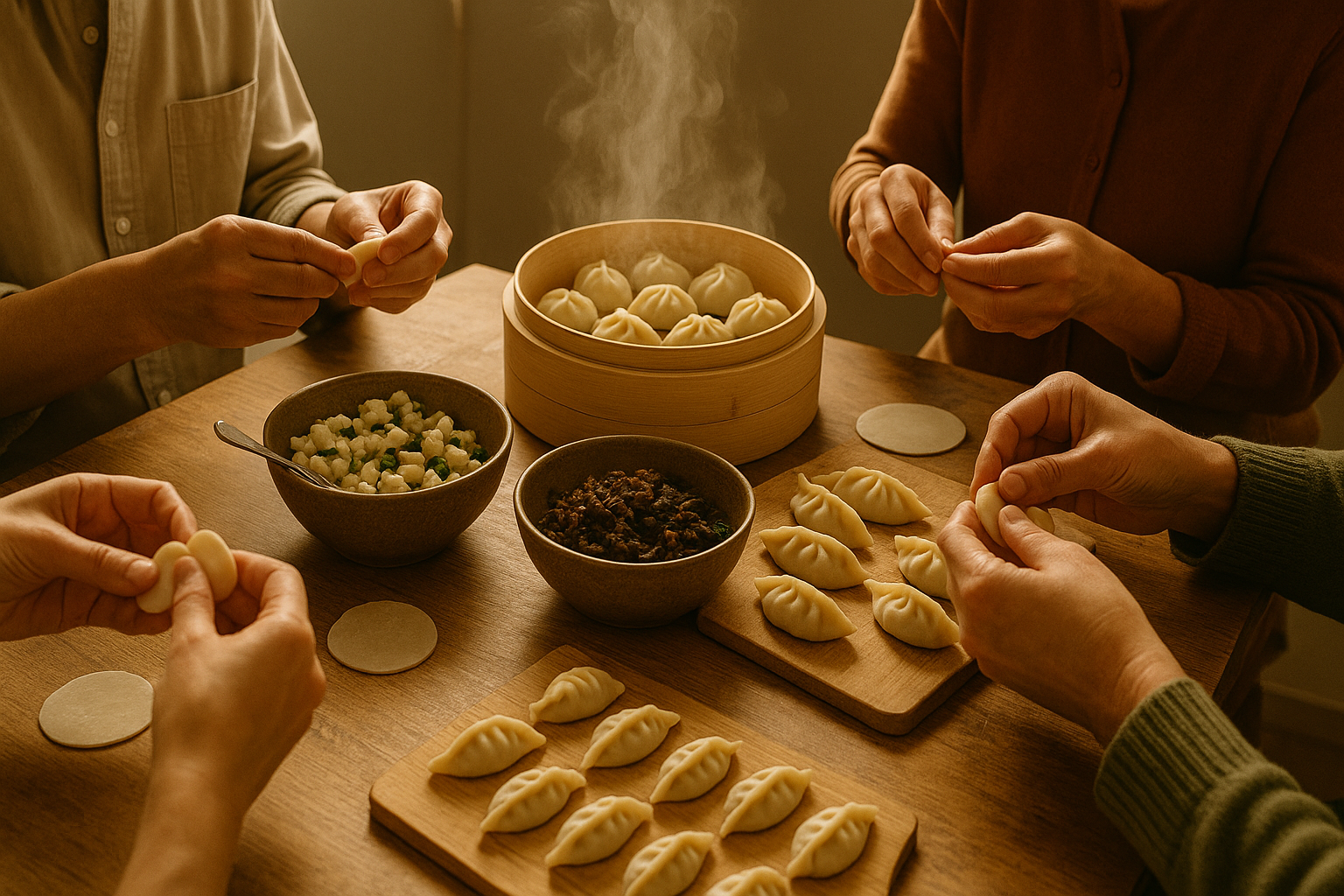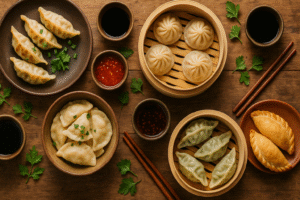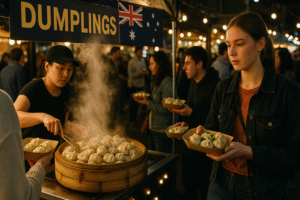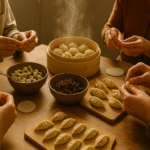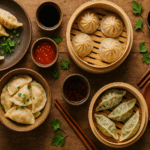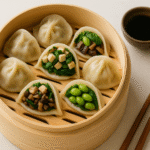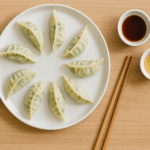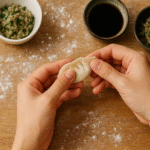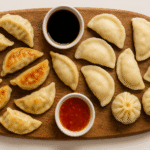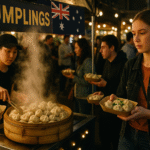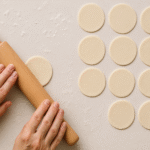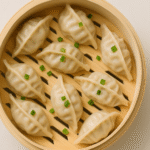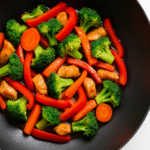The Memory in the Steam
It starts with steam.
A thin cloud rising from a bamboo basket, carrying the scent of garlic, chives, and soy.
In that moment, a kitchen transforms — not just into a place of cooking, but of connection.
Around the table, hands move in rhythm, folding dough over fillings, sealing edges with care.
There’s laughter. There’s silence. There’s memory.
Dumplings have always been more than food. They are comfort shaped by hand — small pockets of home that travel across generations.
(Learn more about tradition in Lunar New Year Traditions and the Symbolism of Dumplings)
A Universal Fold
Every culture has its version of the dumpling — and each one speaks the same emotional language.
In China, dumplings symbolize wealth and togetherness. In Poland, pierogi recall family Sundays. In Japan, gyoza are shared with friends after work.
As explained in The Ultimate Guide to Dumpling Styles Around the World, dumplings appear everywhere — because humans everywhere crave connection.
The act of folding and sharing food mirrors the act of building relationships: delicate, patient, and rewarding.
The Psychology of Comfort
When we eat dumplings, we’re not just feeding our bodies — we’re calming our minds.
According to Psychology Today, comfort foods trigger the release of serotonin and dopamine — the same hormones tied to warmth, safety, and happiness.
That’s why a simple dumpling can feel like a hug.
The soft texture, the warmth, the ritual — all of it reminds us of care.
(Also read: The Surprising Health Benefits of Eating Dumplings)
Folding Together
In modern cities, where time is scarce and connection feels fleeting, dumpling-making has become a quiet form of resistance.
Families, friends, even strangers gather for “dumpling nights,” folding together and sharing stories.
It’s slow food in the truest sense — not because of time, but because of intention.
As one folds, another fills, and another steams, a small orchestra of care takes place. Each dumpling becomes a shared creation, a bond sealed in dough.
(For folding techniques and tips, see How to Make Perfect Dumplings)
Comfort in the Modern World
Even as food trends change, the dumpling remains timeless.
It adapts — to ingredients, to technology, to generations.
You can now find gluten-free wrappers, air-fried versions, even plant-based dumplings filled with tofu and mushrooms.
But the heart of it stays the same: gathering, sharing, connecting.
(Explore our guide to sustainable eating in The Rise of Plant-Based Dumplings: Delicious, Sustainable, and Healthy)
A Fold of Meaning
If you ask anyone what makes dumplings special, their answers vary —
“My grandmother used to make them.”
“They remind me of home.”
“They taste like a festival.”
But beneath every answer lies the same truth: dumplings carry emotion.
They’re not fast food; they’re heart food.
And every time you fold one, you’re doing something ancient — connecting to people you’ve never met, across time and geography, through the simple act of feeding and being fed.
Frequently Asked Questions
Dumplings combine warmth, softness, and familiarity — key elements of comfort. They often evoke memories of family gatherings, holidays, and shared meals.
Making dumplings together encourages conversation and teamwork. Each fold becomes part of a shared ritual, strengthening community bonds.
Yes. Dumplings are central to celebrations like Lunar New Year, weddings, and harvest festivals. They symbolize prosperity and unity.
Read more in Lunar New Year Traditions and the Symbolism of Dumplings.
In China, they represent wealth; in Poland, comfort; in Japan, togetherness.
Explore more in The Ultimate Guide to Dumpling Styles Around the World.
Prepare fillings in advance, set up folding stations, and let guests experiment. Steam or pan-fry as you go, and enjoy the process as much as the meal.
Absolutely. Choose lean proteins or vegetables, use minimal oil, and avoid overly salty sauces.
Read Are Your Dumplings Good for You? for more guidance.
The combination of touch, warmth, and shared experience triggers positive emotional responses tied to care and belonging.
